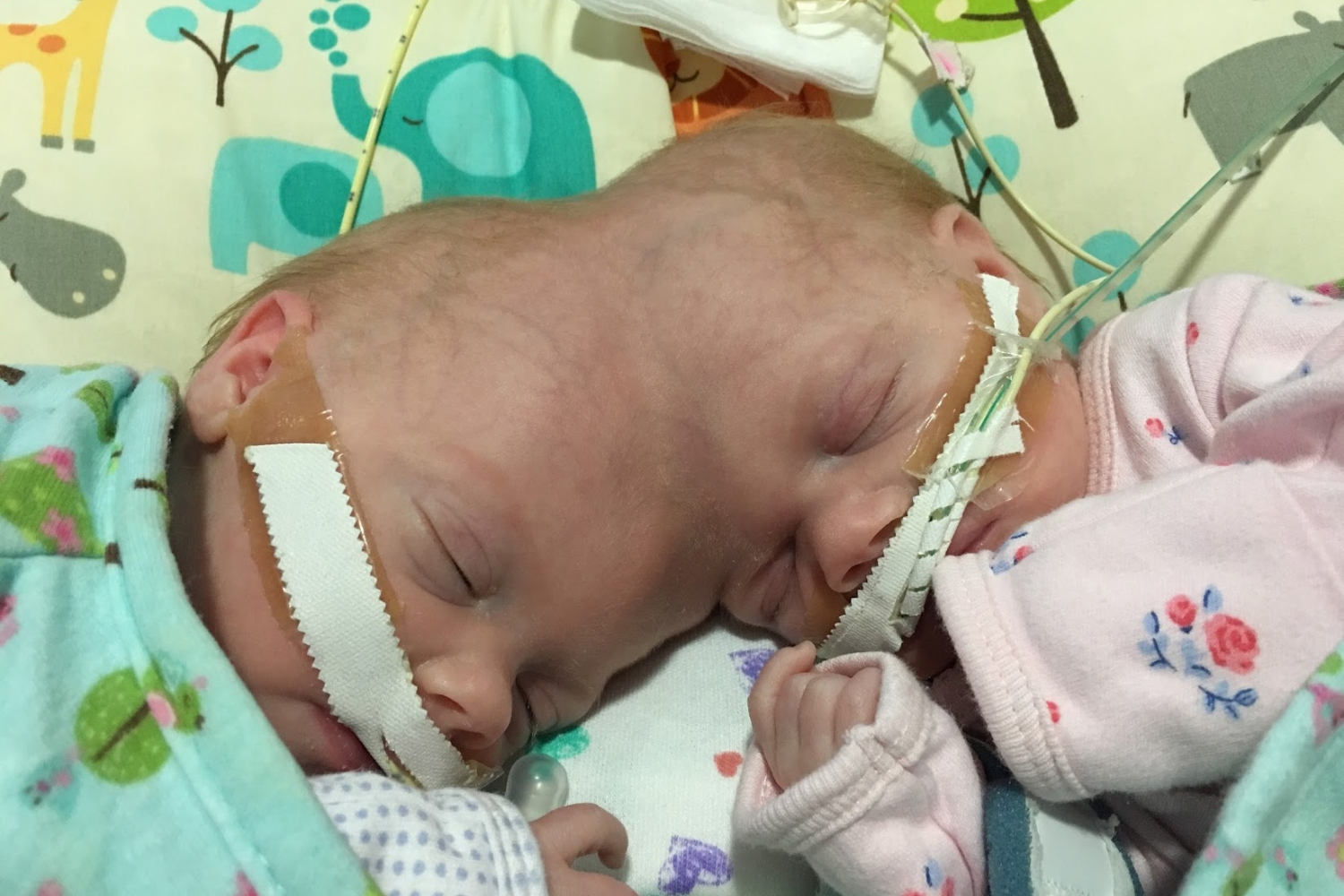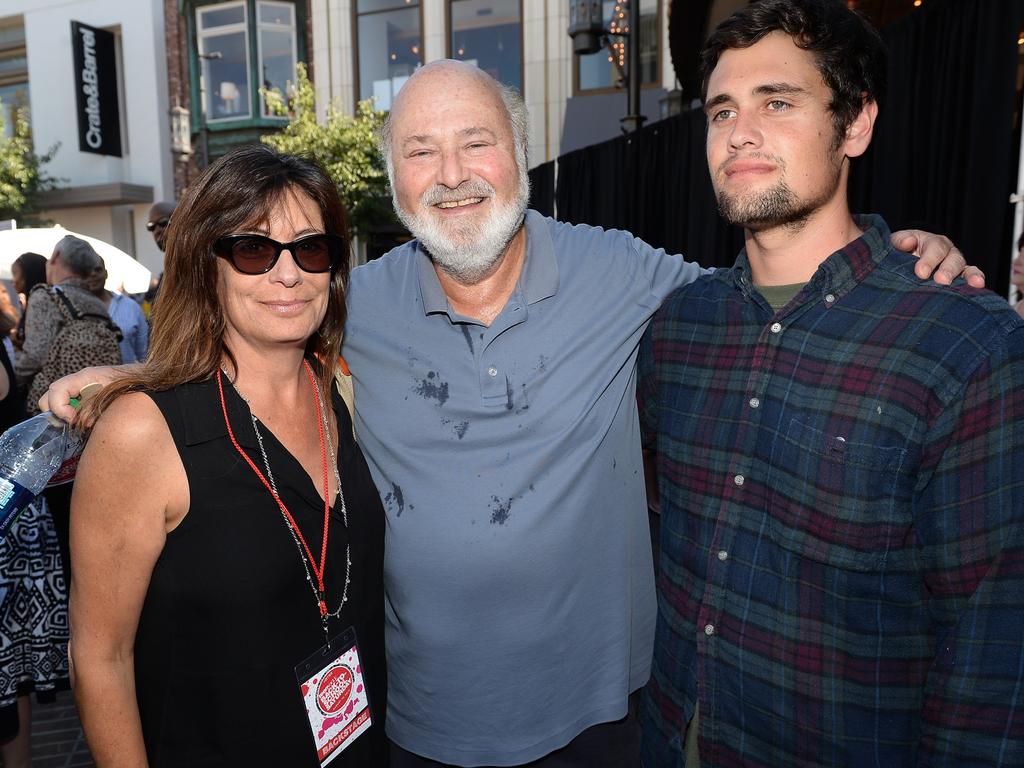
This article is more than
6 year oldConjoined Twins Thrive After Surgery Separates Them at the Head: 'They're Our Little Miracles'

When Riley and Heather Delaney found out they were going to have a baby in January 2016, they envisioned a happy and healthy future for their entire family.
“We were so excited,” Heather tells PEOPLE in this week’s issue.
The couple, from Mooresville, North Carolina, counted down the days until Heather’s first ultrasound. When the moment came, they immediately knew something was wrong from the look on the doctor’s face.
As it turned out, the Delaneys were going to have twins — but they were conjoined.
“We were stunned,” says Heather, 29. “It was awful. But we knew in that moment we would go through the pregnancy no matter what. I just didn’t think it was my place to decide if they lived or died.”
The couple went into planning mode to prepare as much as they could for the many unknowns they were going to face.
Heather and Riley, 26, flew to Children’s Hospital of Philadelphia and met with doctors. Heather would ultimately check into the hospital and go into labor on July 23, 2016. Following an emergency C-section, she delivered twins Erin and Abby, each weighing in at just over 2 lbs.
“It was the scariest moment of my life,” she says. “I didn’t care if they were ever separated; I just wanted them to pull through.”
While conjoined twins are already rare, Erin and Abby’s case was something very few doctors had ever seen. They were craniopagus twins — meaning they were fused together at the top of their heads, a condition occurring only about six times in every 10 million births.
Doctors advised the parents that the girls be separated as soon as possible to risk severe brain damage in their futures.
On June 6, 2017, after 10 months of planning, consultations and preliminary surgeries, a team of 30 doctors, nurses and technicians performed a successful 11-hour procedure to separate the girls — making the then-10-month-old twins one of the youngest separations ever recorded.

LAUREN JOY FLEISHMAN
“It was very risky,” lead neurosurgeon Dr. Gregory Heuer tells People. “We easily could have lost them.”
The most concerning part of the surgery was that the twins shared a superior sagittal sinus — the large blood vessel that carries the majority of the blood from the brain.
• For much more on the Delaney family’s story, pick up this week’s issue of PEOPLE, on newsstands Friday.
“A lot of the time one of the twins who are connected this way dies in surgery,” says Dr. Heuer.
Yet they remained as optimistic as possible and “put all of our faith into the hands of the doctors.”
During the surgery, Abby lost 10 to 15 times her full blood volume, and at one point both girls suffered critical bleeding in their brains.
“We didn’t know if they would make it,” says Riley. “There were times when one of them would code or lose their vital signs. It was tough.”
After many months of ups and downs in the hospital, they went home before Thanksgiving in 2017.
“It lifted our spirits,” says Riley. “We’re so grateful.”
RELATED: Conjoined Twins Separated in Risky Surgery at 7 Months Old Now Thriving at Age 17
While they felt lucky — and had an amazing support system surrounding them from the beginning — the journey was far from easy. Medical bills piled up and Riley had to continue working full time for a retail company in North Carolina while Heather stayed in Philadelphia. He would fly once a month to see her and bond with his little girls.
To help with the costs that continue to accumulate today, the family created a GoFundMe page that has since raised more than $32,000.
These days, two-year-olds Abby and Erin are beating every odd they’ve had to face — and making their parents prouder with each day.
Three times a week, Heather takes the girls to developmental therapy sessions to improve their motor, speech and eating skills, and once a week a therapist comes to their home. Erin, who has always been developmentally ahead of her sister, started crawling in July 2018 and will likely start walking soon. Abby, who has yet to crawl, “is so eager to be independent,” says Heather, “and shows effort.”
Adds Riley, “They’re delayed in some ways because of how long they were conjoined, but we’re hopeful they’ll make up for lost time.”
Currently fed five times a day through a gastrostomy tube in their stomachs, both girls are gradually learning how to eat on their own.
Heather and Riley make sure to celebrate every milestone that their little girls reach, like when Erin recently said “Dada” for the first time. They love interacting with each other and watch their 1-year-old dog Maggie run around the house.
“We want to make sure they know that they’ve come so far,” says Heather. “We’re going to make sure they live the happiest and brightest lives.”




